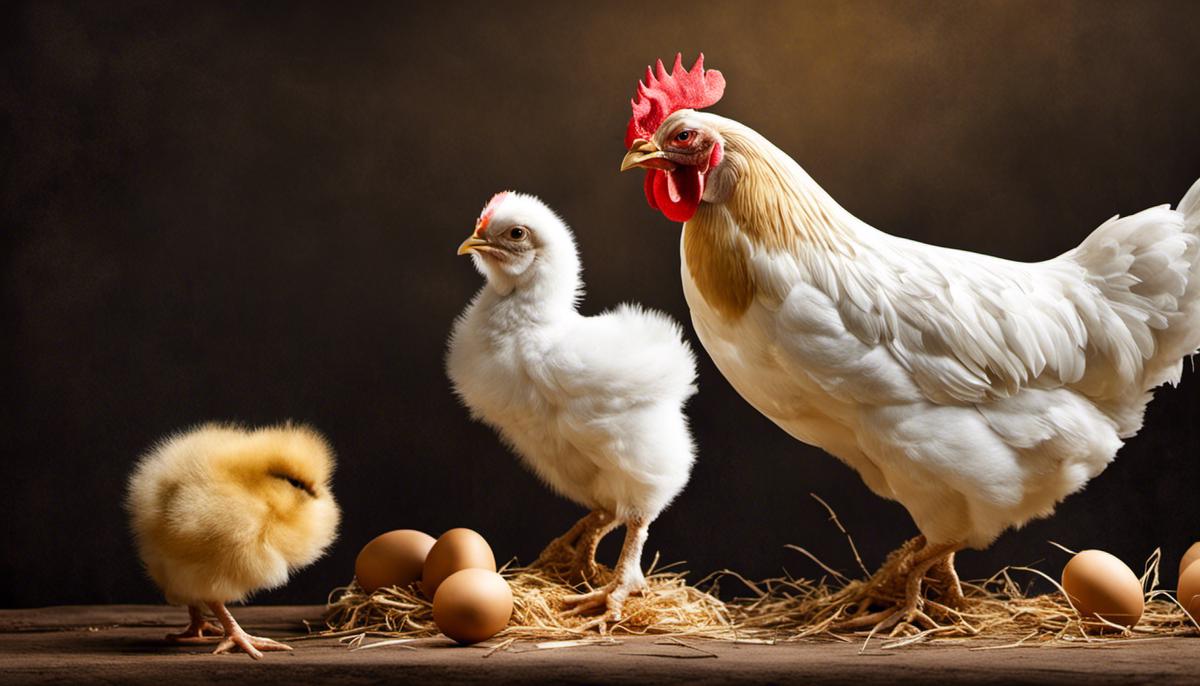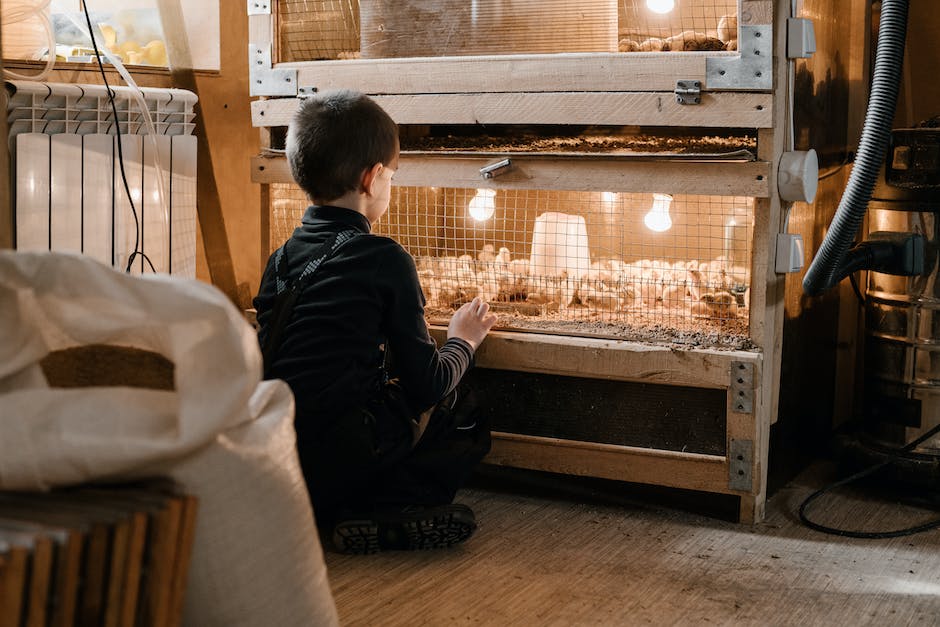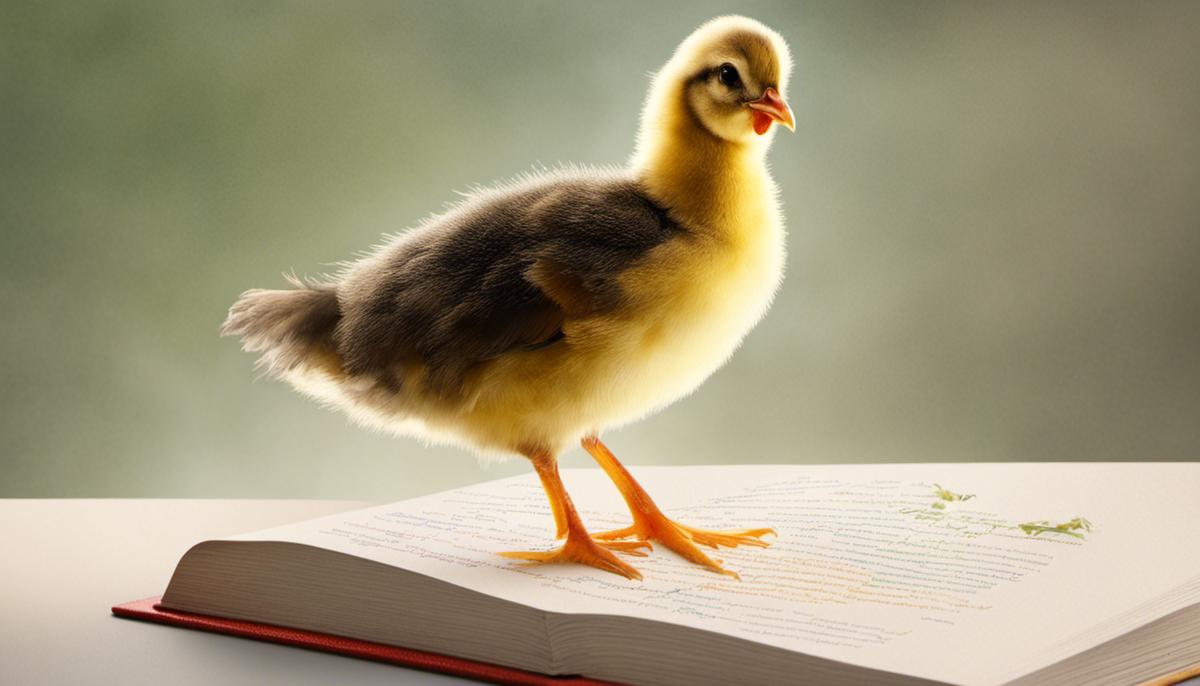Raising baby chicks is captivating, and potentially lucrative, for both novice and seasoned poultry enthusiasts. It is a practice steeped in the understanding and implementation of fundamental science, requiring us to comprehend the various stages of a chicken’s life, from the adorable fragility of a newly hatched chick to the mature grace of a hen. The life cycle of a chicken is a fascinating journey of growth and metamorphosis, each stage with its unique set of behaviors, needs, and practices. Mastering the art of chicken rearing demands dedication, but also knowledge about creating the perfect brooder, ensuring vital nutrition and hydration, and maintaining rigorous health and safety standards.
We will receive a commission if you purchase through our affiliate link at no extra cost to you. Please read our disclosure policy for more information.
Understanding Chickens’ Stages of Life
Understanding the Difference Between Chicks, Pullets, and Hens
Chicks, pullets, and hens are three different stages in a chicken’s lifecycle. Chicks are baby chickens that only recently hatched from eggs, typically younger than six weeks old. They’re fragile and small and have soft feathers or only fluff.
Pullets, on the other hand, are what we call teenage chickens. Once a chick hits the six-week mark until it gets to about 18 weeks of age, it’s called a pullet. At this stage, pullets have partially formed combs, their full wing feathers, and are larger than chicks but smaller than hens.
Hens are mature chickens, at least 18 weeks upward till old age. They are fully grown females that can lay eggs. Hens develop a distinctive appearance, possessing notable combs and colorful plumage.

Understanding Each Stage and Their Behavior and Needs
Chick Stage
Baby chicks may be tiny but require careful management. They should be kept in a warm and draft-free brooder or incubator with a heat lamp, maintaining a temperature of 92-95 Fahrenheit in their first week, decreasing by 5 degrees each week.
Chicks get nourishment from chick start feed, which is typically 18-22% protein. They also require constant access to fresh, clean water. Stimulate pecking and foraging behaviors by periodically spreading small quantities of their feed on the ground.
Behavior wise, healthy chicks are active and curious, frequently napping but mostly feeding and exploring their surroundings. They will twitter in contentment when they are comfortable, and loud peeping may indicate distress or discomfort.
Pullet Stage
As your chicks grow into pullets, their dietary needs change, and it’s time to switch to a pullet grower feed. This feed is specially formulated to meet their growth requirements and is usually 14-18% protein. Equally important is to provide plenty of fresh water.
At this stage, chickens would have fully developed their feathers and won’t need supplemental heating anymore. They can now reside in a coop. Pullets begin establishing their pecking order, which may result in minor squabbles.
Scratch and Peck Feeds® Organic Grower Mash Feed

Hen Stage
Once a chicken becomes a hen, it’s essential to switch to a layer feed, which has a higher level of calcium to ensure strong eggshell production. As with previous stages, provide constant access to fresh, clean water.
Hens continue with the established hierarchy. Their behavior becomes dictated by laying patterns, and they may display nesting behaviors. At this stage, your chickens may require nesting boxes and a safe, secure coop to lay their eggs and sleep. Offering options to egg-laying hens for scratching, dust bathing, and foraging is beneficial in ensuring their happiness and health.

Setting up the Brooder
Setting up a Brooder for Baby Chicks
When starting your journey in raising baby chicks, the setup of the brooder is vital. The brooder serves as a safe and controlled environment for your chicks until they mature and can handle outdoor conditions. The typical brooder setup includes a large plastic container or a wooden box. This enclosure can be made from a variety of materials, as long as it is robust enough to keep the chicks secure and free of drafts.
Inserting a Heat Source
Heat is one of the most important factors for baby chicks survival, they require a constant heat source because they can’t regulate their body temperature. A heat lamp securely clamped to the side of the brooding container is ideal. The heat lamp should be adjustable in terms of height to control the temperature. Ideally, the temperature for the first week should be around 95 degrees Fahrenheit, and it should reduce by about 5 degrees each week thereafter.
Another great source of heat is a chicken brooder heating plate, this is the closest heater Mother Nature, where the hen keeps the chicks warm under her feathers. It is a very natural solution with a big advantage: the chicks will harden earlier and also the growth of their feathers will be quicker. The chicks will be healthier, and you can rest knowing these heat plates these are safe and use very little energy, a heating plate uses less energy than a heating lamp.
This heat plate has a height adjustment system for the legs, this makes this new heating plate very practical and time saving.
Chick Brooder Heating Plate, With Cover, 20-25 Chicks, 12 x 12
Choosing the Right Bedding
Bedding plays a significant role as it absorbs moisture and helps control odor. Bedding also gives the chicks something to scratch around in, promoting their natural behavior. Fine wood shavings, straw, or Oder Eliminator Hemp Bedding are all excellent choices. Ensure the bedding is around 1-2 inches thick and it should be regularly changed to keep the area clean and dry.
Allowing Enough Room for the Chicks to Grow
The space inside the brooder should be ample enough for the chicks to maneuver around comfortably. As a rule of thumb, each chick should have about 2 square feet of space. However, overcrowded conditions must be avoided as they can lead to aggression and illness among the chicks. If you observe that the chicks are pecking at each other, it could be a sign that they need more space.
Providing Feed and Water
Lastly, provide chick-starter feed and fresh water at all times. Choose a feeder and a waterer that won’t tip over and are accessible for small chicks. Remember to change the water daily and clean the containers to prevent the spread of disease.
Offering Protection
The brooder should be placed in a location where it is safe from pets and children. Installing a lid or a wire mesh top on the brooder will ensure that the chicks cannot escape and also protect them from any potential threats.
Providing a proper living environment for baby chicks involves creating a warm and clean space, providing enough room for movement, and keeping their food and water clean. Following these steps will increase your chicks’ chances of growing healthy and strong.

Feeding and Hydration
Understanding Chick Nutrition Basics
Raising baby chicks is not much different from other living babies; they too require a balanced diet for ideal growth and development. A chick’s diet should predominantly consist of proteins, but it’s just as important not to overlook the essentials like vitamins, minerals, and carbohydrates. Predominantly, chicks, being omnivores, can feed on grains, seeds, veggies, but also small insects, hence, a mixed diet should be provided.
Choosing the Right Feed
Chick feed, often referred to as “starter feed,” is the go-to choice for new chick parents. This specially formulated feed is available at feed stores and contains the right blend of nutrients for growing chicks. Starter feeds usually have a protein content between 10% to 20%, which is essential for feathers and muscle development. Consult with the feed store or your vet about the appropriate feed, as breeds may require different protein content. Starter feed is typically fed to the chicks until they are six weeks old.
Naturally Free Organic Chick Starter Feed is a Non-GMO Project Verified and Certified Organic product.
Feeding Frequency
Chicks have small stomachs, and they can’t consume large amounts of food at once. Therefore, it’s vital to ensure they have constant access to feed. A straightforward way to do this is to use a chick feeder, which you can refill every few days. Regularly check the feeder to ensure it’s not empty or contaminated with droppings.
Hydrate Your Chicks
Just like food, baby chicks need continuous access to clean water for proper hydration. Baby chicks are prone to dehydration, so it’s necessary to keep a constant check on their water supply. Use a shallow water dish or specially designed chick waterer to prevent chicks from drowning or getting wet and chilled. It’s essential to change the water daily or as soon as you see any contamination.
Using Supplements
Alongside feed, there are specific supplements that can add value to your chicks’ diet. Grit, in the form of small pebbles or coarse sand, aids in digestion. Offering a small dish of grit to your chicks besides their feed is beneficial, especially if they don’t have access to the outdoors. Probiotic feed supplements can also be added to promote a healthy gut and immune system. Additionally, some keepers also recommend apple cider vinegar mixed with water for its natural antibacterial properties.

Most importantly, remember when raising baby chicks every bird might have slightly different dietary needs. Experts advise starting with a standard approach, then adjusting based on observation and expert advice to ensure the health and growth of your baby chicks.
Health and Safety
When raising baby chicks one of the key responsibilities is understanding the common diseases among chicks. These include salmonella, botulism, infectious bronchitis, and avian influenza. Each of these diseases presents with its own set of symptoms, which might include lethargy, loss of appetite, and unusual behavior. Train yourself to spot these symptoms early on by regularly observing your chicks, reading educational materials, attending farmer workshops, and seeking advice from a seasoned farmer or a vet.
Disease prevention is better than cure. Ensure your chicks’ living quarters are well-ventilated to keep them disease-free. Overcrowding can increase the likelihood of disease transmission, so give them enough space to move around. Consistent vaccination against common diseases can help strengthen their immune systems. Feed your chicks a balanced diet full of necessary nutrients to help them ward off diseases more effectively.
In the event your chicks fall ill, swift and appropriate treatment might be critical for their survival. For bacterial diseases such as salmonella, antibiotics are often prescribed by the vet. Viral diseases, such as avian influenza, are much harder to treat and often focus on relieving symptoms while the chick’s immune system fights off the disease. In severe cases, culling may be necessary to prevent the spread of a deadly disease to the rest of the flock.
Maintaining good hygiene practices is just as necessary as understanding diseases. Regular cleaning of the coop reduces the build-up of droppings and other waste materials, decreasing the chances of chicks contracting diseases. Implement proper waste management practices, such as composting, to ensure the waste does not become a breeding ground for disease-carrying pests.
The chicks’ feeder and waterer should be cleaned regularly to prevent infection. Finally, personal hygiene, such as washing your hands before and after handling the chicks, can reduce the transmission of diseases.
Predators
Predators can pose significant threats to your baby chicks. To protect them, ensure their coop and run are secure and well-enclosed. The use of predator-proof latches and heavy-duty wire mesh can deter common predators such as raccoons and hawks. Scare devices, like fake owls or snakes, can also help keep them at bay.
Baby chicks are prone to accidents due to their small size and curious nature. Restricting their access to dangerous areas, ensuring the coop and run are well-maintained, and monitoring their activities can help prevent accidents. In addition, the use of heat lamps should be closely watched as they can cause fires if not used properly.
Raising baby chicks It’s crucial to remain attentive and proactive in managing these potential risks to successful chick raising.

Whether your motivation for raising baby chicks resembles farming, a simple affection for the feathered species, or perhaps a sustainable way to source eggs, the benefits are manifold. Not only does the process instill a sense of commitment and responsibility, but it also offers rich rewards, in the form of robust hens or the novelty of having home-grown eggs. Remember, knowledge and a compassionate approach towards these sentient beings are vital in promoting their healthy growth. This encompasses understanding their life stages, creating a safe and nurturing habitat, delivering adequate nutrition, and adhering to stringent health and safety practices. Meet these conditions, and you’ll be well on your way to becoming an expert chick rearer, cultivating these tiny creatures into thriving birds.
Before you embark on your journey of raising baby chick, you will need to decide what breed of chicks to raise, for more information on breeds check out my article: Choosing the ideal breed for your chicken farm







